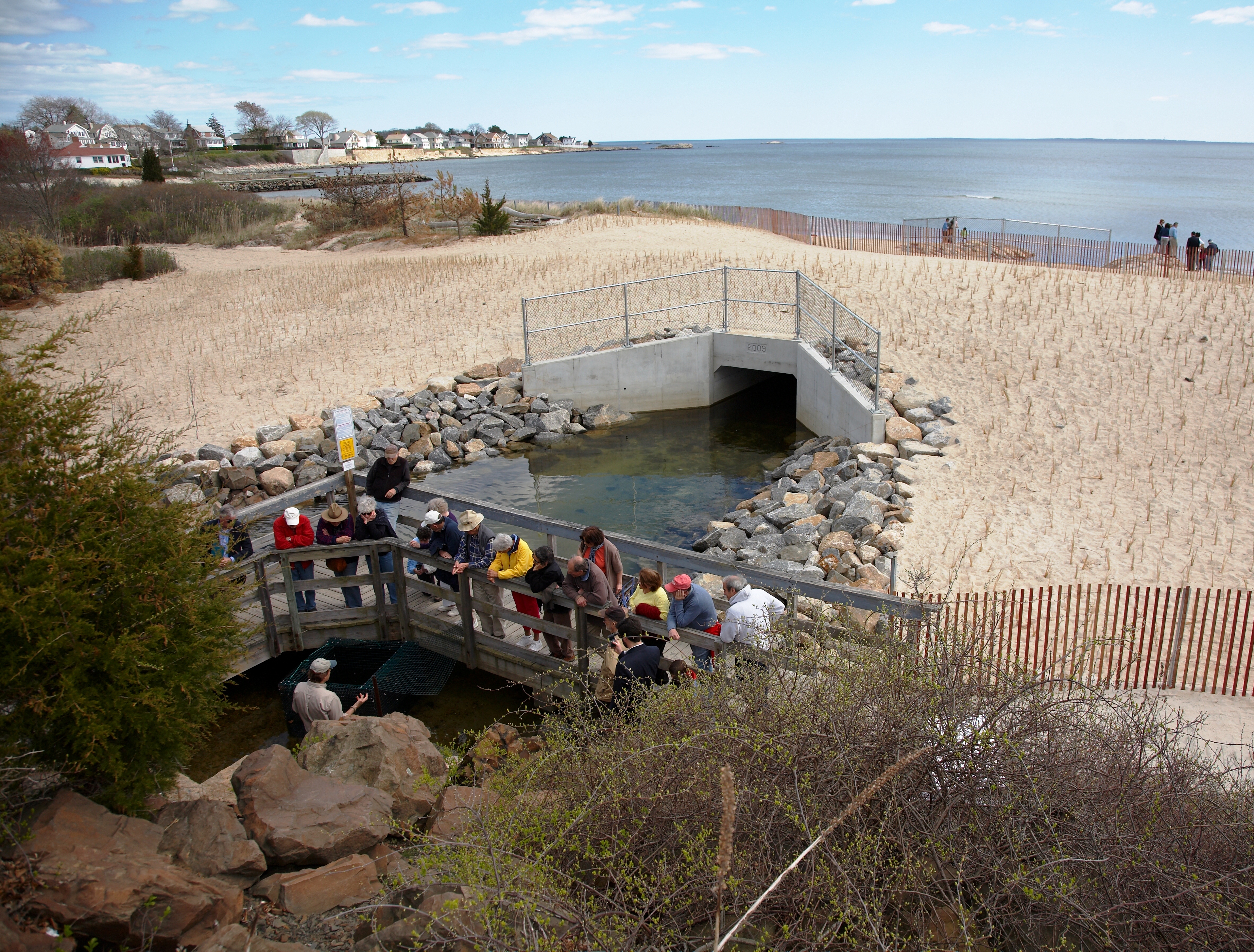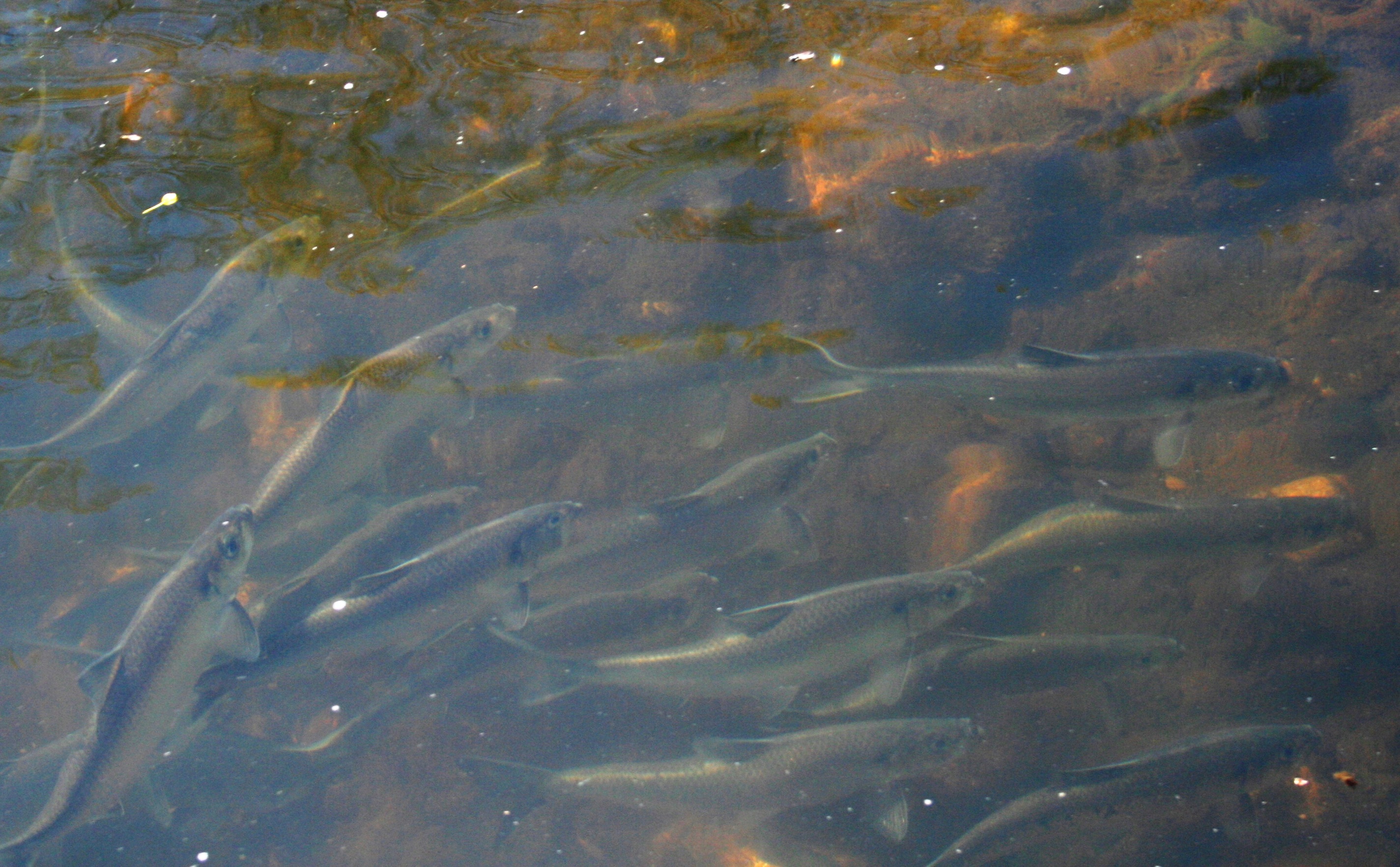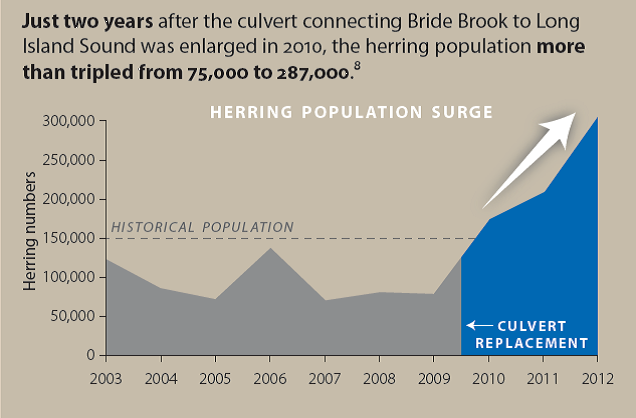It was a good summer for fishing in the Long Island Sound region. According to the CT DEEP Fish Reports, the overall abundance of striped bass and bluefish made for good fishing in hot spots such as The Race and Plum Gut in the Sound, which provide ideal conditions for these larger fish that prefer rocky, high current areas. The Summer Flounder and Black Sea Bass had a fair season, with many throwbacks reported.
Here at Save the Sound, we’re working on several different fronts to boost healthy fish populations: we’re fighting to keep excess nitrogen out of the water to prevent low-oxygen dead zones, advocating for federal fisheries management legislation, and restoring stream, river, and marsh habitat on the ground to create a healthier ecosystem that will directly benefit the fish and anglers in the area. (Read more in Restore America’s Estuaries’ report “More Habitat Means More Fish.”)
Bride Brook
One of our biggest projects can be found on Bride Brook at Rocky Neck State Park in East Lyme. Though Bride Brook is small, it’s historically hosted one of the largest runs of river herring in Connecticut. Those migrating fish were threatened, though, by the blockage and collapse of two aluminum culverts at the mouth of the brook. In 2010, we used federal stimulus funding to replace those with a single large concrete box culvert that is much sturdier, allowing easier fish passage and making the beach safer for human visitors.

Fish passage up and down Bride Brook has increased every year since then—this year over 363,224 alewives were reported entering Bride Lake!
Upstream of the new culvert, Bride Lake hosts hundreds of thousands of spawning alewives every spring. Watch closely to see the water bubbling around the entire rim of the lake! As the alewives move into Long Island Sound and beyond for the adult phase of their life cycle, they represent a key food source for large commercial recreational sportfish such as striped bass, bluefish, Atlantic cod, and tuna.
Wallace Dam
In Wallingford, we completed the Haakonsen Fishway Project in spring 2012. Named for Harry O. Haakonsen, a fisheries biologist and Quinnipiac River advocate who identified Wallace Dam 20 years ago as a critical barrier to fish migration, the installation of this fishway has reopened 17 river miles and 171 lake acres of the Quinnipiac River to fish passage and spawning. Thanks to these efforts, 4,407 alewives, 440 blueback herring, 186 sea lamprey and 2 sea-run brown trout were counted passing up the river. CT DEEP also observed lots of American eel making use of the eel-pass that was installed during construction of the fishway. This project was a priority project for CTDEEP’s Diadromous Fish Plan Initiative and the Quinnipiac River Watershed Association.

Pequonnock River
We recently completed a project in Bridgeport that allows alewives and blueback herring to safely access 1.75 miles of the Pequonnock River and 34 lake acres at Bunnell’s Pond at all tides for the first time since the 1950s. The project includes a live underwater video feed that will stream to the Beardsley Zoo so that children can learn about river herring and why barrier-free rivers are so important. Click here to watch alewives using our temporary fishway last spring, and look for a blog post about the permanent Pequonnock River Apron Fishway soon!



Just wanted to extend my gratitude for the amazing work you guys are doing on so many fronts to help bring balance and sustainability back to our aquatic ecosystems. Were it not for people and organizations such as your we would be in even greater danger of losing our most precious resources. Thank you!
Thank you so much, Brian!